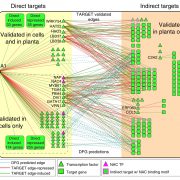
Network paths for nitrogen response in Arabidopsis (Nature Comms)
Plant Science Research WeeklyA goal of systems biology is to study how transcription factors participate in gene regulatory networks (GRN) underlying biological processes. In a recent report, Brooks et al. used network science to uncover how transcription factors mediate the early response to nitrogen (N). Authors identified the…

Pollinator functional diversity and abundance enhance crop pollination and yield (Nature Comms)
Plant Science Research WeeklyInsects provide a valuable service to the agricultural industry through pollination, which increases both the quality and harvest volume for many important food crops, however little is known regarding the role of insect functional trait differences in promoting crop pollination. Woodcock et al. tested…
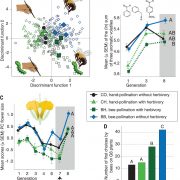
Pollinators and herbivores boost the evolution of floral traits ($) Science
Plant Science Research WeeklyThe characteristics of flowers, including morphology, color, nectar and fragrance, are closely related to their pollination methods. To attract pollinators, plants often produce large, colorful, or fragrant flowers. Increasing evidence has indicated that herbivorous feeding activity also affects flower…
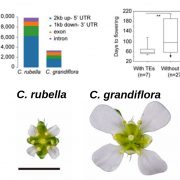
Transposable elements drive rapid phenotypic variation in Capsella rubella (PNAS)
Plant Science Research WeeklyHow can a species with limited genetic variation rapidly adapt to new environments? This phenomenon is known as the genetic paradox of invasion. Here, Niu et al. studied the role of Transposable Elements (TEs) in Capsella rubella, focusing on flowering-time variation. By analyzing population genomics…
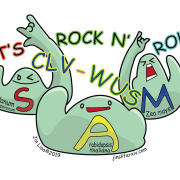
Genetic compensation mechanisms for maintaining plant stem cell robustness ($) (Nature Genetics)
Plant Science Research WeeklyIn shoot meristems, the CLAVATA (CLV)-WUSCHEL(WUS) signaling module contributes to the continuous stem cell proliferation for plant development. In Arabidopsis, core CLV-WUS signaling includes the peptide ligand CLV3 and its receptor protein kinase CLV1 together with the transcription factor WUS. These…
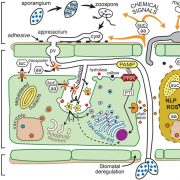
Plant Science Research Weekly: April 26th
WWR Full PostReview. After the deluge: Plant revival post-flooding
Crop losses due to flooding are occuring with increasing frequency. Whilst time submerged can be lethal, the post-submergence period is also potentially lethal. In this new review, Yeung et al. provide an overview of factors that contribute to…
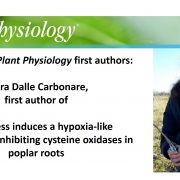
Recognizing Plant Physiology first authors: Laura Dalle Carbonare
Plant Physiology, Plant Physiology: Author ProfilesLaura Dalle Carbonare, first author of Zinc excess induces a hypoxia-like response by inhibiting cysteine oxidases in poplar roots
Current Position: Postdoctoral research scientist at School of Biosciences – Plant and Crop Science Division, University of Nottingham (UK)
Education: PhD degree in…
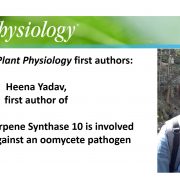
Recognizing Plant Physiology first authors: Heena Yadav
Plant Physiology, Plant Physiology: Author ProfilesHeena Yadav, first author of Medicago Terpene Synthase 10 is involved in defense against an oomycete pathogen
Current Position: Guest Scientist at Leibniz Institute of Plant Biochemistry, Halle (Saale)
Education: Ph.D. student in Plant Biochemistry (2014-2018), Department of Cell and Metabolic Biology,…
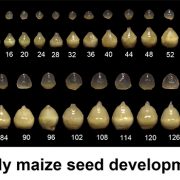
High-temporal-resolution Transcriptome Landscape of Early Maize Seed Development
Research, The Plant Cell: In a Nutshellhttps://doi.org/10.1105/tpc.18.00961
Yi et al. describe a high-temporal-resolution transcriptome landscape of early maize seed development.
By Fei Yi, Wei Gu, and Jinsheng Lai, State Key Laboratory of Agrobiotechnology and National Maize Improvement Center, Department of Plant Genetics and…

